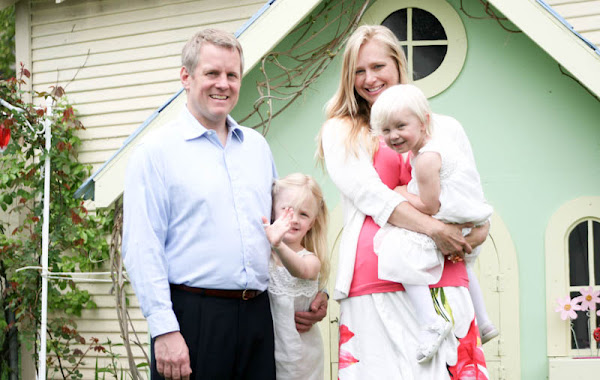










I still have lots to learn. I look at some of the professional photography blogs and wonder how the heck they get those amazing pictures, but I think (and hope) I am well on my way!




















 Maleah was truly blessed with the many gifts she received. I was impressed by how thoughtful and "crafty" the gifts were.
Maleah was truly blessed with the many gifts she received. I was impressed by how thoughtful and "crafty" the gifts were. And I gotta give props to my awesome son, Jarod, who put up with 11 little girls running around so that he could fulfill his mom's request to take pictures. Jarod, you're the best!
And I gotta give props to my awesome son, Jarod, who put up with 11 little girls running around so that he could fulfill his mom's request to take pictures. Jarod, you're the best! Lay the dishtowel on top of your counter and place the heating pad on top of it. Fill your stockpot 1/4 to 1/2 full with 110 degree tap water. Turn the heating pad on to medium or whatever setting that will keep your water at 110 degrees. Place stockpot on top of heating pad. Sorry, I didn't get a picture of the stockpot.
Lay the dishtowel on top of your counter and place the heating pad on top of it. Fill your stockpot 1/4 to 1/2 full with 110 degree tap water. Turn the heating pad on to medium or whatever setting that will keep your water at 110 degrees. Place stockpot on top of heating pad. Sorry, I didn't get a picture of the stockpot.
 Pour your milk into a pan to heat it up. Now, here is where things will differ depending on if you are using raw milk or not. I am fortunate enough to get raw milk from a local farmer each week. If you don't know the benefits of raw milk check out this site www.raw-milk-facts.com. This stuff is sooo much better for you than the pasteurized and homogenized milk you get at the store . A lot of people that are allergic or sensitive to regular pasteurized milk can drink raw milk with no problems. Anyway, back to making our yogurt. If you have the benefit of using raw milk than you will only heat it up to 110 degrees. This is very important because we don't want to kill the living and beneficial bacteria and food enzymes that are in it. If you are NOT using raw milk than you heat it up to 185 degrees and then cool it back down to 110 degrees. Now we need to add our 3 Tbs. of already prepared yogurt to our milk. In a separate small bowl, combine a tidge of the warmed milk (can't be hotter than 110 degrees) and the 3 Tbs. of yogurt. Mix together well and then add back in to the pan. Gently mix it in.
Pour your milk into a pan to heat it up. Now, here is where things will differ depending on if you are using raw milk or not. I am fortunate enough to get raw milk from a local farmer each week. If you don't know the benefits of raw milk check out this site www.raw-milk-facts.com. This stuff is sooo much better for you than the pasteurized and homogenized milk you get at the store . A lot of people that are allergic or sensitive to regular pasteurized milk can drink raw milk with no problems. Anyway, back to making our yogurt. If you have the benefit of using raw milk than you will only heat it up to 110 degrees. This is very important because we don't want to kill the living and beneficial bacteria and food enzymes that are in it. If you are NOT using raw milk than you heat it up to 185 degrees and then cool it back down to 110 degrees. Now we need to add our 3 Tbs. of already prepared yogurt to our milk. In a separate small bowl, combine a tidge of the warmed milk (can't be hotter than 110 degrees) and the 3 Tbs. of yogurt. Mix together well and then add back in to the pan. Gently mix it in. Take this mixture and pour it into your quart jar and place a lid on it. Put your jar into the water of your stockpot. Water should come up about 1/2 way of the jar. Place lid on the stockpot and then a towel over it to keep the warmth in. Now let it sit and incubate for 8-10 hours. Periodically check to see if water is staying at 110 degrees. You may need to adjust your heating pad accordingly. When time is up, take the jar and place in fridge for at least 8 hours to firm up. And you should have yogurt. YAY! Pretty easy, huh?
Take this mixture and pour it into your quart jar and place a lid on it. Put your jar into the water of your stockpot. Water should come up about 1/2 way of the jar. Place lid on the stockpot and then a towel over it to keep the warmth in. Now let it sit and incubate for 8-10 hours. Periodically check to see if water is staying at 110 degrees. You may need to adjust your heating pad accordingly. When time is up, take the jar and place in fridge for at least 8 hours to firm up. And you should have yogurt. YAY! Pretty easy, huh?